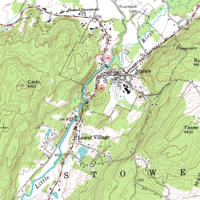
Photo from wikipedia
Abstract The paper looks at the issues related to the shaping technology of the parts made of ceramic materials and at the influence that machined surface topography has on surface… Click to show full abstract
Abstract The paper looks at the issues related to the shaping technology of the parts made of ceramic materials and at the influence that machined surface topography has on surface functional properties. The mono- and polycrystalline ceramic parts were shaped in the four treatments of finishing process. The studies of surface topography were performed using three measurement instruments: interference microscope, scanning electron microscope, and atomic force microscope. It was noticed that multi-scale analysis of surface topography allows for obtaining a complementary and detailed overview of changes that ceramic parts undergo during abrasive machining process. The characteristics of the machined surface created in finishing operations were prepared based on the quantitative and qualitative descriptions. Parametric analysis of surface texture allowed for assessing the quality and changes of the machined surface in the technological process. During the non-parametric analysis, surface views after each abrasive machining treatment showed different kinds of surface defects (cracks, crumbles, dents or scratches) which could play an important role in the operation process, i.e. generating various wear mechanisms.
Journal Title: Measurement
Year Published: 2020
Link to full text (if available)
Share on Social Media: Sign Up to like & get
recommendations!